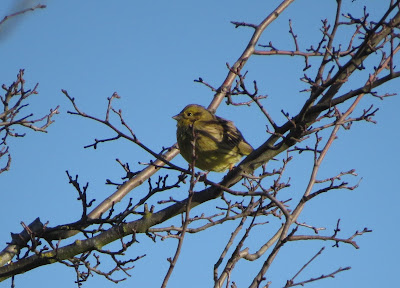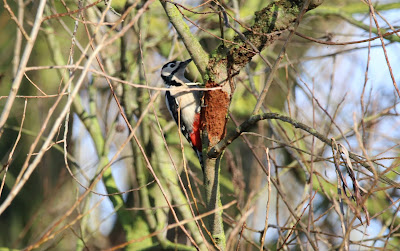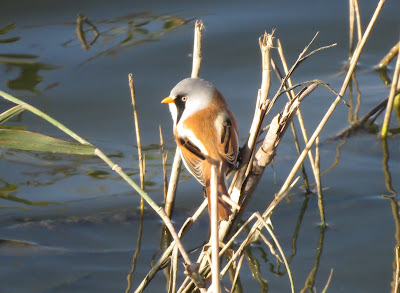BUZZARDS are very common on site, and I see them pretty much every time I visit the site. This is only quarter of a mile outside Ipswich.
December was a fairly unremarkable month. There were frosty nights at the start of the month, with their accompanying bright sunny days, followed briefly by a flurry of snow midmonth, before ending on a mild note.
As is usual in the festive period I was overloaded with work and was unable to do much birding, the upside being I was able to concentrate more on the local patch, in the brief periods between shifts.
Yellowhammer
There were some decent bird flocks overwintering in the area, and shows how important this seemingly normal site is for birds. A small field recently ploughed attracted a large amount of birds. There was a flock of 30+ YELLOWHAMMERS, which also included a few FINCHES, including a beautiful male BULLFINCH. This is about the normal size of flock for the area and reflects a good breeding season. The flock would commute between the field stubble to roost in the neighbouring hedgerow before drinking from a puddle on the dirt road.
The same field held a flock of 30+ SKY LARKS by far the largest number I have seen in the area, and must be migrants, with a few on territory in Lark Field.
There was a flock, again numbering 30+, of GOLDFINCHES around the entrance of the site, again feeding on a field of set aside left so since the last harvest, which regularly attracts small bird flocks.
On the reservoir, on the 9/12, there was another LITTLE GREBE, my fourth record for the area. Nearby, on the permanent pasture where the cows sometimes graze, there were a few MIPPITS and REDWINGS, feeding amongst the short grass.
Outside the patch, but around where I live, there is a flock of 25 COLLARED DOVES present and several hundred STARLINGS in the area around my house.
As is usual for this time of year there were plenty of TIT flocks, their constant energy is uplifting on a dull day.
A large portion of my local patch is composed of horse pasture. The short, permanent turf is important for birds that feed in the shallow mud like THRUSHES and GREEN WOODPECKERS.
This WREN has found a roosting site. it would sit on top of it trilling away, announcing to the world that this was its hole.





















































